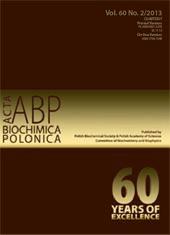Heat and SDS insensitive NDK dimers are largely stabilised by hydrophobic interaction to form functional hexamer in Mycobacterium smegmatis.
Abstract
The primary structure and function of nucleoside diphosphate kinase (NDK), a substrate non-specific enzyme involved in the maintenance of nucleotide pools is also implicated to play pivotal roles in many other cellular processes. NDK is conserved from bacteria to human and forms a homotetramer or hexamer to exhibit its biological activity. However, the nature of the functional oligomeric form of the enzyme differs among different organisms. The functional form of NDKs from many bacterial systems, including that of the human pathogen, Mycobacterium tuberculosis (MtuNDK), is a hexamer, although some bacterial NDKs are tetrameric in nature. The present study addresses the oligomeric property of MsmNDK and how a dimer, the basic subunit of a functional hexamer, is stabilized by hydrogen bonds and hydrophobic interactions. Homology modeling was generated using the three-dimensional structure of MtuNDK as a template; the residues interacting at the monomer-monomer interface of MsmNDK were mapped. Using recombinant enzymes of wild type, catalytically inactive mutant, and monomer-monomer interactive mutants of MsmNDK, the stability of the dimer was verified under heat, SDS, low pH, and methanol. The predicted residues (Gln17, Ser24 and Glu27) were engaged in dimer formation, however the mutated proteins retained the ATPase and GTPase activity even after introducing single (MsmNDK- Q17A, MsmNDK-E27A, and MsmNDK-E27Q) and double (MsmNDK-E27A/Q17A) mutation. However, the monomer-monomer interaction could be abolished using methanol, indicating the stabilization of the monomer-monomer interaction by hydrophobic interaction.Acta Biochimica Polonica is an OpenAccess quarterly and publishes four issues a year. All contents are distributed under the Creative Commons Attribution-ShareAlike 4.0 International (CC BY 4.0) license. Everybody may use the content following terms: Attribution — You must give appropriate credit, provide a link to the license, and indicate if changes were made. You may do so in any reasonable manner, but not in any way that suggests the licensor endorses you or your use.
Copyright for all published papers © stays with the authors.
Copyright for the journal: © Polish Biochemical Society.


